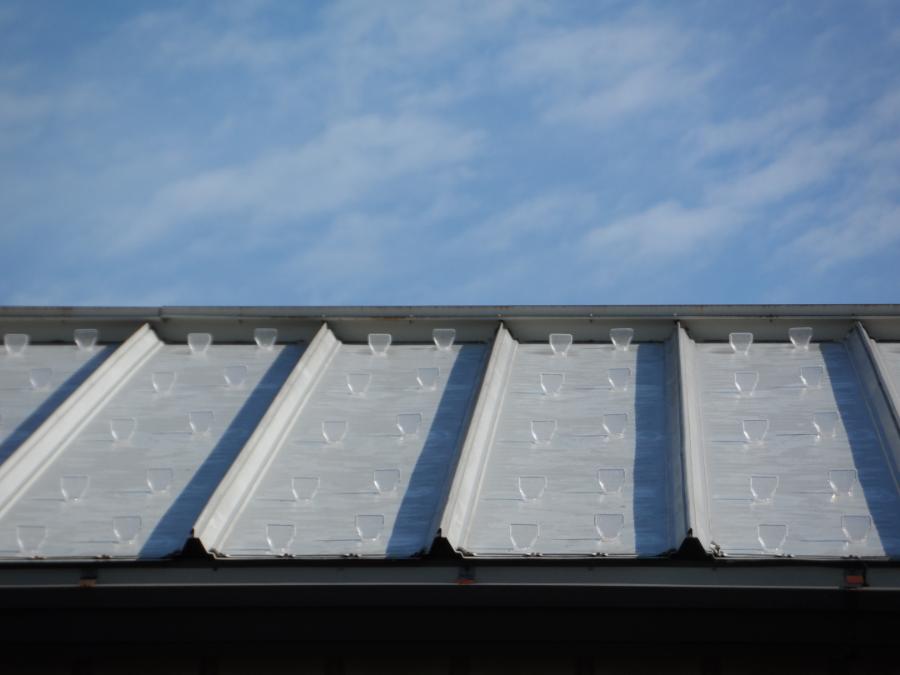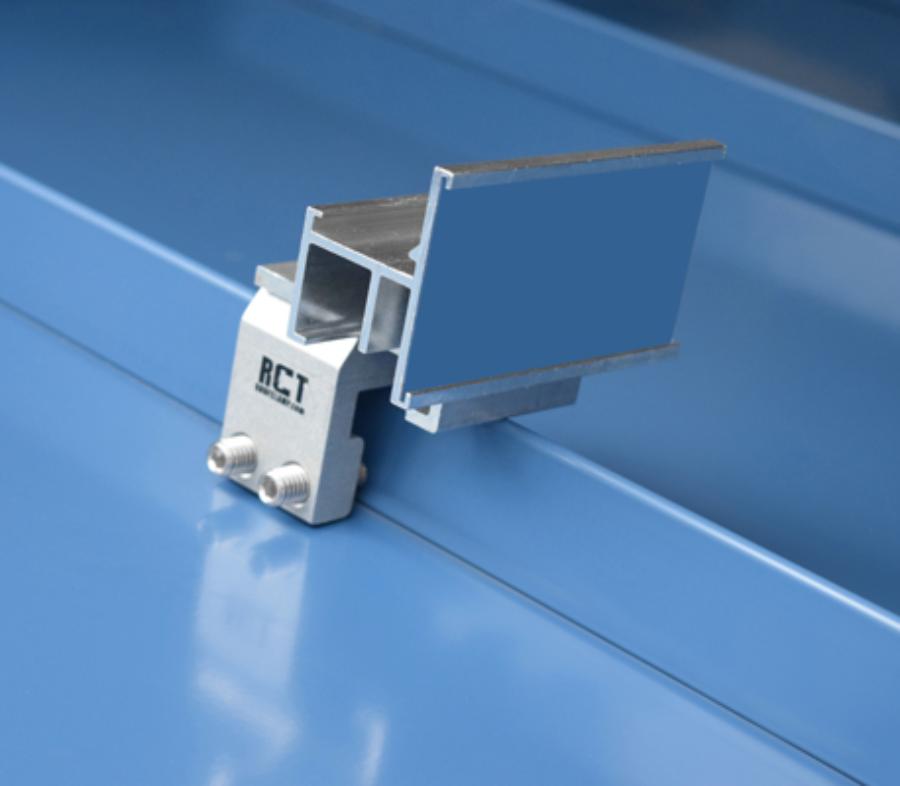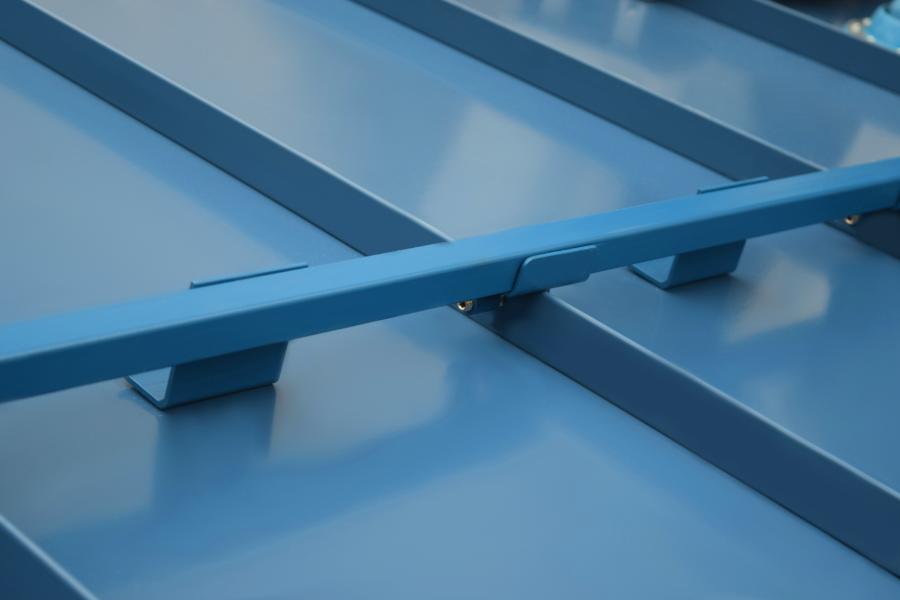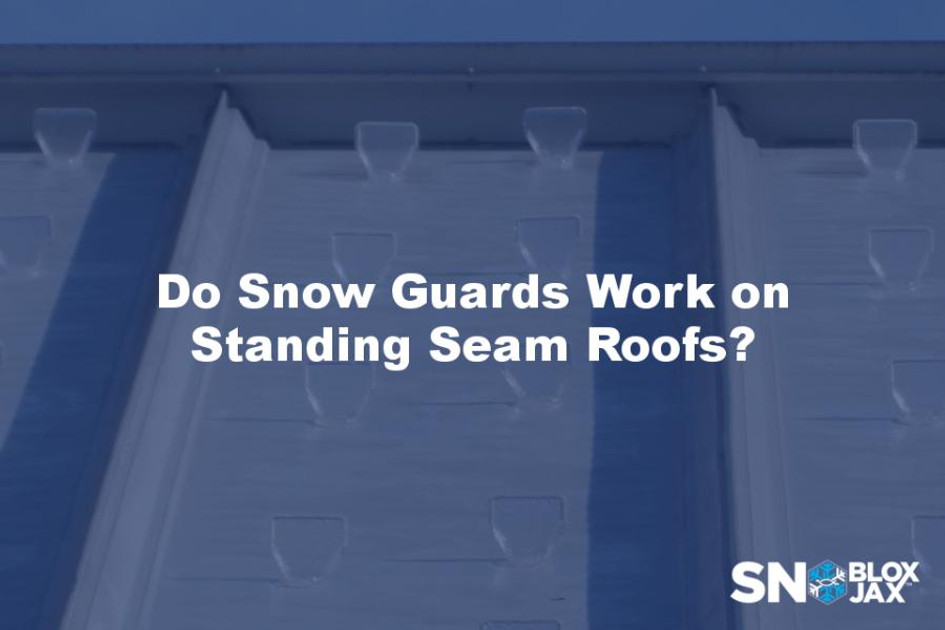Do Snow Guards Work on Standing Seam Roofs?
Posted by Derek Gamble - SnoBlox-Snojax Specialist on Feb 26th 2024
Do Snow Guards Work on Standing Seam Roofs?
While a snow-covered roof might look charming, the reality is that it can pose serious risks to your property, people, and pets below, especially when it comes to standing seam metal roofs. Standing seam metal roofs are incredibly popular with today’s roofing customers. With their durability and sleek appearance, standing seam metal roofing is gaining traction as a highly desired roofing style, but these roofs are, unfortunately, vulnerable to the threat of sliding snow and ice. This is sometimes also referred to as a “roof avalanches”. This is where snow guards come in to save the day. But the real question is do snow guards work on standing seam roofs? In this blog, we will discuss their effectiveness, types, installation, and more. Let’s get into it.
What is a Standing Seam Roof?
Standing seam metal roofing refers to a type of metal panel system with concealed fasteners, characterized by vertical legs and a wide, flat space between these legs. This design includes raised seams or vertical ribs that extend above the flat surface of the panel. Standing seam systems are versatile, serving purposes in both metal roofing and metal wall applications. The key concept behind standing seam systems is the concealment of fasteners. This can be achieved by attaching the panel to the roof deck using a clip or by directly fastening it to the decking material beneath the vertical leg, known as the fastener flange.
Effectiveness of Snow Guards On Standing Seam Roofs
Standing seam roofs are smooth and slippery, which creates the ideal conditions for this sliding hazard. Snow guards are like the nightclub bouncers of the roofing world – they're designed to prevent sudden snow and ice avalanching that can occur on a metal roof. They do this by holding the snow in place, allowing it to either melt gradually and drain into the gutters or fall off in harmless amounts. This not only protects people, pets, and property below but also does wonders for the roof's longevity by distributing the snow's weight more evenly over the entire surface. This distribution of weight may also aid in the prevention of roof collapses which can occur when an isolated section of roofing is overloaded. For standing seam metal roofs, purchasing the correct type of snow guards is incredibly important because not all snow guards are compatible with this style of roof panel. Make sure to do your homework. A great reference tool to get you started is our Snow Guard Buyer’s Guide. It contains easy-to-understand, straightforward information that will answer many questions that you might have.
Types of Snow Guards
Snow guards come in a few different styles that are compatible with standing seam metal roofs, each with its own attachment method and aesthetic appeal.

Pad Style Snow Guards
Clear polycarbonate snow guards, like the SnoBlox Deuce and IceJax 2, come as individual plastic units and are installed using a liquid adhesive like Surebond SB-190. Surebond SB-190 has long stood as the industry standard for snow guard adhesion and is the only glue that we recommend and sell. It creates a permanent bond with the guards for a strong, secure attachment. These guards are mounted directly to the flat of the panel and depending on seam spacing, may require more than one unit per panel. It is never recommended to penetrate a standing seam metal roof with mechanical fasteners due to the floating nature of these panels. Doing so can result in roof leaks, damage to the panels, loosening and eventual release of the guard, and/or loss of the manufacturer’s warranty. Because of this, we never recommend using metal pad-style snow guards like our stainless steel SnowCatcher on a standing seam roof. A high-quality snow guardis expected to endure the entire lifespan of the roof. Pad-style guards are typically affixed in multiple staggered rows, evenly spaced along the slope and traveling the entire length of the roof. You can visit our Glue Down Snow Guard Spacing Guidelines Page for more information.
Polycarbonate pad-style snow guards are popular with our customers because of their transparent design and cost-effectiveness. While the majority of these products come in clear, which casts no shadow and can almost become invisible, you will occasionally find color-molded versions of more popular styles in various roofing shades. It is important to obtain samples before making a full system purchase for on-site color comparisons and test fitting. Pad-style snow guards are also popular because they can be easily installed by most homeowners without the need for extensive roofing knowledge or multiple tools. In the unlikely event of a failure, the guard will release from the roof panel, causing no damage, and can be re-installed using more of the Surebond once the temperature reaches the required 50 degrees Fahrenheit for approximately 28 days that is necessary to achieve a full cure.

Clamp On Snow Guards
This style of metal snow guard utilizes non-penetrating clamps to fasten individual snow guards directly onto the seam of the panel. Our SnoCleat RC and RCT were created by cleverly combining the benefits of both our patented RoofClamps and trusted ColorBar snow rails. Together these elements have created a new product that, although new to the market, is already finding itself a devoted fan base. Unlike many other seam-mounted individual guards on the market, our product comes with a swivel base for the face of the guard that allows movement when incorrectly used and subjected to impacts from sliding snow and ice in the flat of the panel. Guards without this ability will often be damaged due to bending or twisting that not only ruins the guard itself but can cause damage to the panel seam or disengagement of the panels from one another. It never ends well.
Secure attachment is achieved with 3 stainless steel cup-point set screws per unit. These staggered screws require almost half of the torque required by some of our competitors who use round point or bullet point screws that can slip and slide down the rib, marring the panel and causing seam deformation. Cup point set screws form a posi-lock connection that, as the name implies, locks the snow guard firmly to the rib. For more information about set screws, you can visit our blog on this very topic.

Snow Bar and Snow Rail Systems
It is important to note that buildings in geographic locations with a ground snow load of 45 psf or higher will need a stronger solution than either pad style or individual clamp-on snow guards can offer. In those cases, you will need a snow bar or rail system. These heavy-duty snow retention systems are like the bodybuilders of snow guards. Effective models typically feature square, rectangular, or proprietorially shaped metal extrusions of aluminum or steel. These continuous rails run parallel to the eave and get bolted to the roof with a non-penetrating clamping mechanism much like the clamp on SnoCleats that we talked about earlier. The difference between a rail system and the SnoCleat models is the fact that snow rail systems involve long continuous runs of bars instead of individual sections. Because of the heavy-duty nature of this kind of snow guard system, it is perfect for steep roofs and heavier snow loads.
While there are other shapes available on the market, we have found that the most effective shape for a rail system is one with a flat face that is perpendicular to the panel flat to create a strong barrier to hold the snow and ice in place. We have found over the years that diamond-oriented and rounded bars often act more as ramps or cutting blades that do little to hold or stop shedding snow and ice. If you have a car rolling down a steep hill, do you want a ramp at the bottom to stop it or a brick wall? It is the same basic principle here.
Snow bar and rail systems are sleek, modern products that can be just as aesthetically pleasing as they are strong. Our SnoBar and ColorBar systems are available in silver mill finish, but can also be powder coated in a custom bespoke color to match the roof of your project. The aluminum ColorBar also has the additional feature of being able to accept a 2” wide color strip in its face. This allows you the flexibility to use up any leftover roofing flat stock still on the job site.
Getting the Snow Guard Placement Right
Start From The Bottom and Work Your Way Up
To make sure your snow guards do their job effectively, let's kick off by placing the first row about 12 inches up from the bottom edge of the roof. If your roof has an unsupported overhang, then it is important to move that row directly above the outside structural wall. For some customers in areas with low snow loads or those with shallow-pitched roofs, 1 row may be all that is required on your project, but this is rare.
When Multiple Rows are Necessary
On buildings in areas with higher snow loads and/or those with steeper pitches, the need for multiple rows going up the slope is fairly common. This helps to distribute the weight evenly. Every roof is different however and as such they all have different needs and requirements. Just because your neighbor’s house only needs 1 row, doesn’t necessarily mean yours can get away with that too. Many factors are considered when determining a snow guard layout. We have seen many times over the years installations of snow guards where all of the rows are squeezed together at the bottom of the slope, leaving the upper portion unprotected. This is a waste of time, money, and resources that provides no benefit whatsoever. If you have 40’ of roof run and all of your rows are squished together in the first few feet, then those lower rows are doing practically nothing and the upper row is doing all of the work trying to support more than it should. You want your multiple rows to break the entire panel run from the peak to the eave up into equidistant segments. You can check out our standing seam rail spacing guides for more info.
Don’t Isolate Your Snow Guards
Installation in isolated placements on your roof is never recommended. It is not enough just to put a few snow guards above an entryway, chimney, HVAC unit, or garage door. Doing this is a recipe for disaster and is not a matter of if they will fail, but of when they will fail. Snow and Ice on a roofs form a large pack that can extend the entire length of your roof until it breaks and sheds. All of that weight will be pressing down on the snow guards and without the aid of complete rows extending the full length of the building, there is not enough strength for even the strongest snow guard to handle these demands. We have also published a blog recently on Why Snow Guards Should Never Be Installed in Isolated Areas.
Conclusion
In regions where snowfall is as regular as your morning coffee, snow guards become the unsung heroes for standing seam metal roofs. They're the security system that ensures snow doesn't go rogue and cause chaos below. With different types available, homeowners can select guards that not only suit their roof's aesthetic but also cater to its structural needs. Sure, the cost and installation might need a bit of contemplation, but the perks of having snow guards far outweigh the risks of letting snow have a free fall from your roof.
For more information, or to place an order, drop us an email at support@snojax.com, or simply give us a call at 1-800-766-5291. We're here to help! Also, make sure to give our Snow Guard Buyer’s Guide and our What’s Works and What Doesn’t page a quick read, as it contains lots of important and easily digestible information to consider before placing your order.

